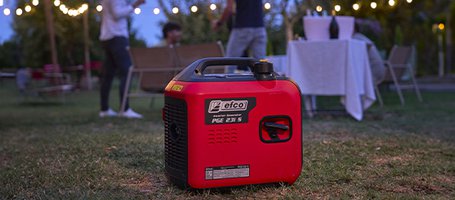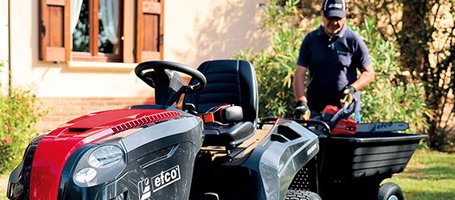Autumn is a great time for planting and sowing in the garden, at least until the temperatures drop too low and the ground freezes over. Where you live is also a major factor. Here in Italy, the climate varies a lot from north to south and depending on whether you live on the plains, in the mountains and along the coast: this is particularly true for the season between summer and winter.
Why plant and sow precisely in autumn? Because it gives the roots time to adapt and grow little by little, since although plants are dormant during winter, they continue to be physiologically active. In particular, the roots are always growing and, moreover, in this period they don’t need to compete with the aerial part. This means that when spring arrives, the awakening plants will resume their development at a faster rate and with greater vigour, making them better prepared to cope with the heat and drought of summer.
Temperatures in autumn are no longer as high as in summer, so water loss through leaves and soil is reduced. You can also count on the ground being still warm, at least to a certain extent, and on seasonal rainfall, factors that favour rooting and root growth. This applies to all flora, both big and small: trees, shrubs, evergreen plants, perennial and seasonal herbaceous plants, vegetables and grass. Unless it is a non-typical autumn, seasonal rainfall means that your plants will need much less watering, and the more plants you have, the more water you will save.
Now that we have explained why, we will now find out what you should plant, sow and cultivate in autumn in your garden and vegetable patch.
What to plant in the garden in autumn
So, which plants should you plant in autumn? From September to December, depending on your locality, transplant trees and shrubs of both evergreen and deciduous varieties. For the latter, wait until they have lost their leaves. This is also the best time to plant shrubs that will become hedges for marking the boundary of your property. October-November is the optimum period for the Po Valley area of Italy, which acts as an “average” reference location with respect to colder and milder parts of the country.
As for what to plant in the orchard in autumn: this season is also favourable for planting whips, which are 1-2-year-old fruit tree saplings: here you can find our step-by-step guide to making an orchard.
In addition to trees and shrubs, other garden plants that you should bed in during autumn include perennial herbaceous plants (from mid-September to mid-October); roses (from late October to late December); and spring-blooming bulbs such as crocuses, hyacinths, lilies, muscari, daffodils and tulips (September to November).
Before planting, spend some time preparing the soil: it should be tilled to decompact it—making it softer and more porous—and to add whatever is needed to make it more fertile. Spreading organic fertilisers, such as manure and compost, supplies the soil not only with essential nutrients but also with organic matter that will improve its structure.
You can till the earth using a rotary tiller or manual tools (spade, pitchfork or hoe). If the area needs clearing of grass or previous crop remains, you can use a brushcutter or alternatively a flail mower, if working in large countryside plots with stubborn vegetation.
We said that tilling the soil helps to keep it fertile: find out how else you can improve the condition of the soil and ensure that it does not decline. And as for compost: why not make it yourself? Start by reading our guide to homemade compost.
In the garden, before planting trees, shrubs or hedges, we recommend that you start with clear ideas, i.e. with a project: here you will find our tips on DIY garden design. Do you love an oriental ambiance? Here you will find ideas for creating a zen garden
What to sow in the autumn? The lawn
Early autumn is the best time to lay down grass seed, or to reseed your lawn if it is damaged or thinned out due to summer heat stress and drought, disease and parasites, excessive foot traffic, and so on. If more than half of your lawn needs to be reseeded (the best time to determine this is after removing any thatch by passing over it with a scarifier), you should start over from scratch: first by weeding and tilling the soil, then sowing the grass seeds.
A lawn doesn’t necessarily have to be visibly damaged to resow it: light reseeding helps to keep the grass dense and therefore more resistant to trampling and less vulnerable to weeds.
From September to October, the soil is still warm, temperatures are mild, rainfall is frequent and the garden is less visited (therefore less affected by trampling): these are the ideal conditions for seeds to germinate and grass seedlings to grow quickly. Of course, success also depends on the local climate and the variety of seeds. Once your lawn is sown from scratch or reseeded, it is essential that the seeds can take root and develop sufficiently before winter, ready for the first cut in spring, whether it is carried out with a hedgetrimmer, lawnmower or garden tractor.
Here you can follow our instructions on preparing soil and sowing a new rustic or English lawn. Or on the other hand, does your lawn need reseeding? Here's how to do it with our guide to reseeding a damaged lawn.


What to grow in the vegetable patch in autumn
Having already discussed the garden, now let's see what you should sow and plant in your vegetable patch during autumn. Unless you are in a very cold area, you can still sow between October and December. But what exactly? Fast-growing vegetables (such as cima di rapa [Italian turnip], broccoli, spinach, various types of lettuce, carrots), peas and broad beans that can be harvested in spring. You can also transplant onions, shallots and garlic.
Winter isn’t the most favourable season for your vegetable patch, but you can help winter vegetables by protecting them with non-woven fabric sheeting, or by growing them under a greenhouse. Discover how to protect plants from the cold and how to build a DIY greenhouse.
Finally, what gardening tools are essential at this time of year? Here are the ones which we think are the top tools for tending the garden and vegetable patch in autumn.









